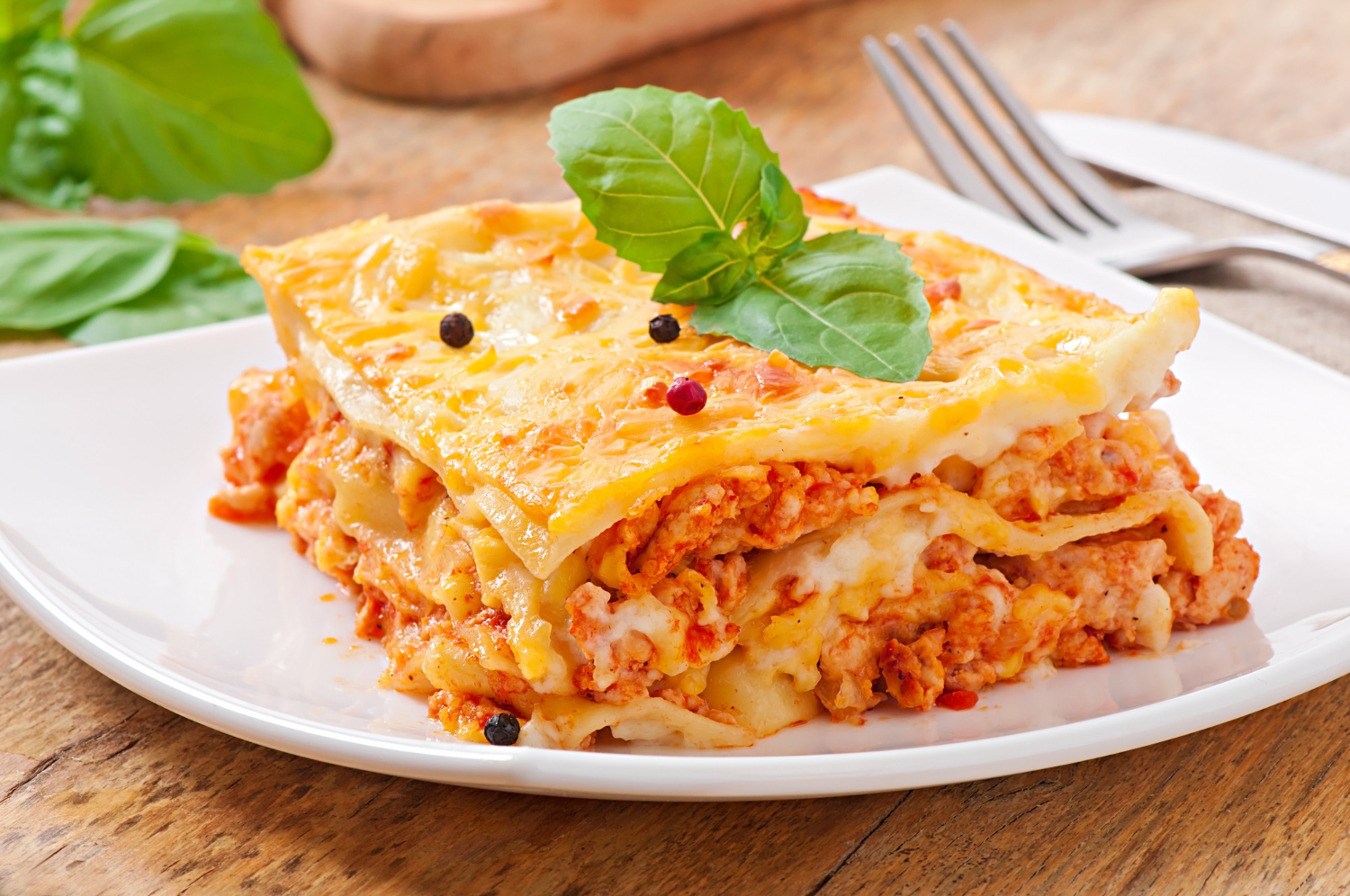Casseroles and gratins are two practical dishes that don’t transform a home cook into a mess. It’s easy to make these side dishes in a single dish. Sometimes you might even mix all the ingredients together in the same bakeware.
Does it mean lasagna is actually seen as a saucepan? The answer is not yes or no. Most lasagnas are complicated things, from the white sauce to the tasteful layers of pasta, dressing, and cheeses.
What Is the Difference Between Casserole and Lasagna?
For thousands of years, baked dishes have existed. Early casserole recipes were pounded, pressed, and filled with a savory meat mixture like chicken or sweetbread.
A classic casserole is a simple, easy to prepare and make one-pot meal. Casseroles can be someone’s comfort food. Casseroles can be made with various meat, veggies, and starches, such as rice or pasta.
While it may sound like lasagna, classic lasagna is a bit more complicated. The Italian classic is made with uniformly layered pasta sheets. Casseroles are generally much easier, and the ingredients are mixed into the dish.
What Qualifies as A Casserole?
Casseroles refer to the cookware itself and the food that is cooked and served in the dish. Everything goes with casseroles. Meat, poultry, pasta, and vegetables may be contained. Casseroles usually have a cheese or a creamy component, but not always. Like gratins, they can be covered with a crust based on breadcrumbs.
- A good casserole is a mixture of flavors that cook together. The dish is easy to make, and no stack of meals remains. A casserole is straightforward but full of flavor.
- The components are evenly distributed throughout the dish and perfectly baked. Every bite should have a bit of it all. The three main features of all good casseroles include meat or protein, vegetables, and starch. The ingredients are raw and cooked together.
- Numerous proteins used in casserole production include all types of meat, ground or shredded. Ground or shredded beef, pig, and venison; chicken or turkey shredded; even wild game, if your family has it.
- In casseroles, beans produce a great protein as they are cheap and filling. Typically, around 1 pound of meat or 2 cans of beans are enough. Increase your family to 1 1⁄2 pounds if you have older children or want to serve them for more than one meal.
- Here, we often think about potatoes, but rice, quinoa, gold, cauliflower, and sweet potatoes work just like a good starch for your casserole pasta. Most potatoes can be added raw, or frozen hash browns can be used. Cook grains, rice, and pasta before adding to the saucepan until slightly firm.
- The last way to add vegetables is with casseroles because their flavor is often masked by the sauce. The sky is the limit of vegetables; just ensure that hard vegetables are cooked or softened beforehand and cut to even cooking.
- The sauce makes your dish a saucepan. It brings everything together and turns a group of ordinary ingredients into a beautiful meal. Pesto, marinara, pizza sauce, alfredo, enchilada sauce, stock of chicken or vegetables, and gravy are also available.
- It is really a defining characteristic of most casseroles because all tastes better covered in cheese. If your family doesn’t eat cheese, this ingredient might be optional. Use 1-2 cups of cheese for a 9×13 casserole. The portion can be blended or arranged in the saucepan, and the remaining half can be doused on top.
- With the use of spices and dried herbs, you can choose to make any casserole your own. For example, add half or one teaspoon of each smoked paprika, cumin, oregano, and chili powder for Mexican casseroles. Add 1 teaspoon basil and a drizzle of balsamic vinegar to the Italian casseroles.
Why Is Lasagna Not a Casserole?
Lasagna sure looks like something of a casserole, but it is usually linked to pasta dishes such as spaghetti. So this predicament raises the question: What is a saucepan essentially?
Casseroles are the actual kitchen utensils and the food cooked and served in the dish. Everything goes with casseroles. Meat, poultry, pasta, and vegetables may be contained. Casseroles typically have a cheese or a creamy component, but not always. Like gratins, a breadcrumb-based crust can be surmounted.
In fact, there is a distinction between a saucepan and a lasagna. They are both baked in an oven, but a gratin is a particular casserole shape. When cooked, the ingredients will be layered instead of added together. In most cases, a gratin is also a side dish, not the main one, and it has a signature crust that must be gratinated. Therefore, potato gratins are known, but pasta gratins are rare. Nevertheless, a lasagna is certainly a gratin due to its layering methods.
What Is Lasagna Classified?
Lasagna is an Italian platter consisting of stacked layers of thin, flat pasta interspersed with ragù as well as other vegetables, cheeses, seasonings, and spices, like garlic, oregano, and basil. Melted mozzarella cheese can top the dish. Cooked pasta is typically put together with the other ingredients, then baked in an oven. The resulting lasagna saucepan is cut into single portions.
Gratin is a food technique with a brown crust, often with breadcrumbs, rasped cheese, egg, or butter. Gratin is primarily prepared in a somewhat shallow dish. A gratin is baked under an overhead grill or grill, which forms a golden crust and is often presented in the bakery.
Gratins mean the dish has a browned crust, by definition. The crust can consist of ingredients such as breadcrumbs and butter mixed with cheese. Once the crumbs have been topped, the dish is usually quickly heated under the broiler to give a good, crispy crust. Or the toppings can be baked. A gratin dish is a shallow container that is ovenproof for preparing gratins and like meals.

